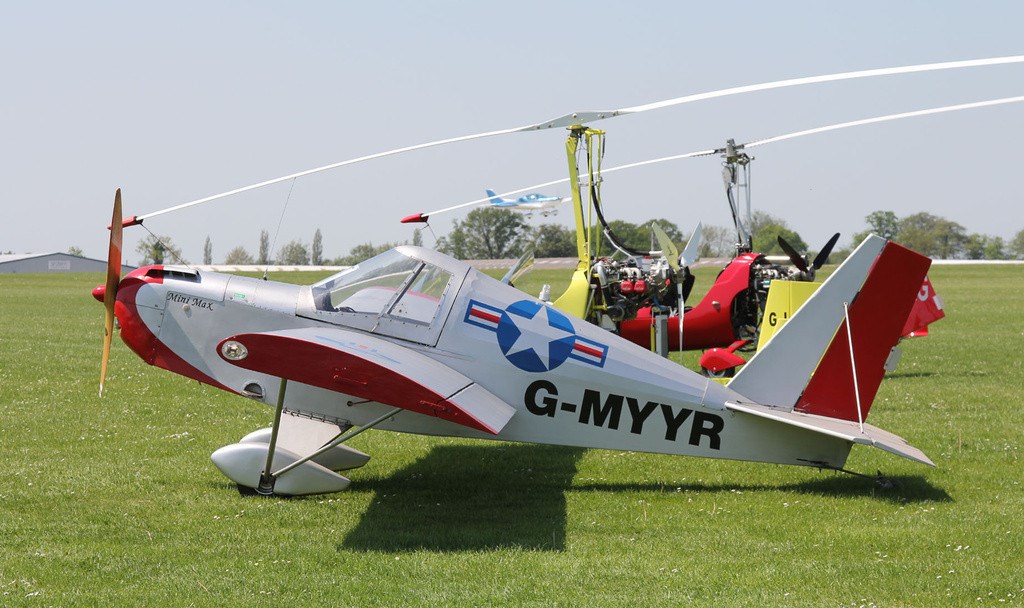
The CAA has issued the much-anticipated temporary exemption for the deregulation of single-seat microlights (exemption E3795), in effect expanding the SSDR category to include a significantly broader range of microlights.
Owners of any single-seat microlight are now able to opt in to the exemption issued by the CAA which allows them to operate without a Permit to Fly. The temporary exemption will be replaced by a permanent change to the Air Navigation Order in 2015. Owners wishing to make use of this exemption need to complete and send to the CAA the form attached to Information Notice IN-2014/091. SSDR aircraft are also currently exempt from having to hold a noise certificate.
Those who have been following the debate will notice that the final outcome is different from what was proposed earlier. In a move that has disappointed the LAA and BMAA, CAA has decided that once the ANO has been changed to incorporate the content of the exemption they intend that there will be no option to continue holding a Permit. This means that unlike many other changes to the regulations, there will be no ‘grandfathering rights’ offered to existing aircraft, and those members who were keen to continue operating in the permit regime will no longer have that option.
During the development of the rule changes, both LAA and BMAA lobbied the CAA strongly to keep the Permit to Fly route available because this system allows the Associations’ Engineering Departments to support owners in the evaluation of new aircraft types, modifications and repairs, and in sorting out continued airworthiness issues as and when they arise. The systems in place provide excellent safety performance. Because regulated microlights have a well-established safety track record, obtaining insurance in the regulated class is straightforward. LAA and BMAA representatives were therefore keen that members of either association wishing to continue to benefit from the existing arrangements should still be free to do so, and still feel that the CAA should draft the ANO change in such a way that this route is still kept open.
Nevertheless, we hope that these changes to the regulations will help encourage innovation and freedom at the lighter end of the sector, freeing manufacturers from some of the burden and overhead of formal airworthiness checking and oversight, and allowing designers to experiment. Of course, whilst owners will be able to make changes to aircraft in this category, it should be remembered that existing aircraft will have been designed by experienced people and will have accumulated a history of safe operation under the ‘old’ system. Changes should be made with extreme caution and are often best left to those who are at least as qualified as the aircraft’s designer: the onus will be largely on the participants to keep this part of our sport safe!
Just to remind those who aren’t fully up to speed: this alleviation applies to single-seat microlights, which are defined as having a maximum take-off weight not exceeding 300 kg for a landplane, or 390 kg for an amateur-built aircraft issued a Permit to Fly prior to 1 January 2003, or 330 kg for an amphibian or floatplane, or 315 kg for aircraft equipped with an airframe-mounted total recovery parachute system. The aircraft must also have a stall speed in the landing configuration and at its maximum take-off weight of not more than 35 knots calibrated airspeed.
The expansion of the SSDR category remains only applicable to microlights, of course. If an aircraft is presently cleared as a ‘Group A’ aircraft then it is probably not eligible to be a microlight and hence not eligible to be deregulated, even if the gross weight falls within the limits above. Airspeed indicators frequently under-read by several knots at low speeds, giving the impression that the stall speed is lower than it actually is. Transferring an existing ‘group A’ LAA aircraft to the microlight category in order to become classified as a deregulated aircraft will involve first getting a change in classification agreed by LAA Engineering, which is put in train by submitting a category change mod application.
For the guidance of members who own single-seat ‘Group A’ aircraft, from the LAA’s knowledge, the following aircraft are unlikely to be eligible for deregulation because they exceed the 35 knot calibrated stall speed and/or the weight requirement:
- Tipsy Nipper
- Clutton Fred
- Brugger Colibri MB2
- Druine Turbulent
- Luton Minor
- Jodel D9/D92
- Taylor Monoplane
- QAC Quickie
- Colomban MC-15 Cri-Cri
- Corby Starlet
- Monnett Moni
- Wolf WII Boredom Fighter
- Whittaker MW7
- Star-Lite SL-1
- Rans S9
- Staaken Flitzer
- Chiltern DW.1/1A
Of course, being ‘deregulated’ (at least in an airworthiness sense) means that these aircraft will no longer be part of the LAA’s formal system and as such LAA inspectors will not be able to offer advice and inspections of these aircraft, at least whilst wearing their LAA hats. It will of course still be essential to have third party insurance, and it remains to be seen how the insurance market responds to this new development.
Until the ANO has been updated, the final position isn’t set, so we would encourage owners of single seat microlights to let us and the CAA have feedback on their views on deregulation as experience is gained, so that the final law change can be formulated with the benefit of any worthwhile lessons from the introductory period. Owners who wish to remain within the regulated system are recommended to inform the CAA promptly as this could be the last chance to keep this option open.